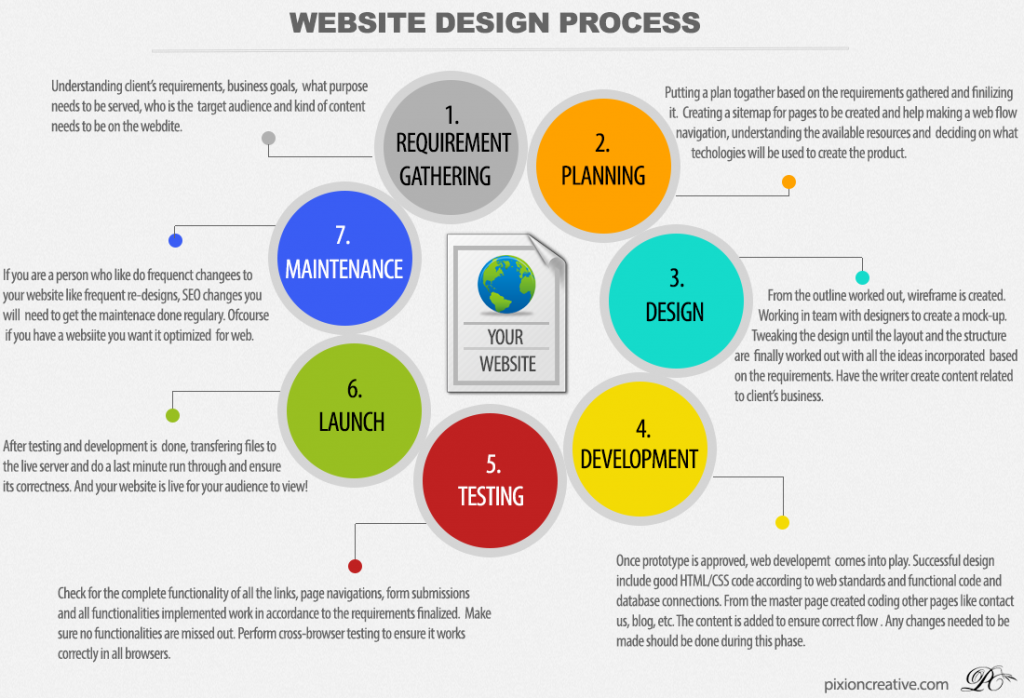In summary: Numerous websites merely pay lip service to handiness, such that the situation remains spread out. Web site graphic designers must be reminded of the primary accessibility instructions and just how it can change their design and style for the better.
Accessibility is seen as a buzz word in web site design nevertheless the fact is that, more frequently than not, it remains only that – a hype term. Reputable, web designers may possibly tell you that they wish to make their design as being readily available as possible, yet if you take a look at what number of websites which are realistically available to ALL internet consumers, then you will be aware of just how much web-site designers really just target the majority of the market. As in a great number of things, clients with disabilities get the short end of the stick.
Concerning marketing, putting a whole lot of time and effort and resources on for less than 10% to 20% of the current market, could appear to be competitive. After all the exchange interest rates is bound to be much smaller than that. The actual reality however is that the regulations in simple terms declares that websites must be accessible to everyone, and this includes customers with handicaps. In line with the Disability Discrimination Act (DDA), which has been available for more than a decade, service providers need to “consider taking suitable measures to update a routine which makes it unreasonably confusing for disabled people to make use of its services. Furthermore it states that to make sure of accessibility an example of acceptable program that they ought to deliver may consist of “accessible web sites”. Just by dismissing legal requirements, internet site owners aren’t just passing up an chance to take advantage of an additional 10% to 20% of the current market and also risking being prosecuted.
To be certain that you offer an accessible internet site, the most beneficial place to commence is without doubt the W3C’s Web Accessibility Initiative (WAI) online site. Seeing that it tackles the topic somewhat exhaustively, We would recommend which you think about by going over their priority checkpoints, to learn if your web site at least sticks to or uses vast majority of guidelines.
One. The key priorities with regard to internet site ease of access are as follow s:step one. Furnishing a text equivalent for non-text elements. This would be to make certain that screen readers can read through those elements and make clear to visually impaired consumers whatever is in that part of the internet site. We will usually provide the text equivalent just simply by by means of Alt tags or even the “longdesc”.
Step 2. Making sure colored info are also provided with out having coloration. This is for the color blind.
Step 3. Undertaking improvements within the natural language of a document’s text and any text equivalents clearly defined. For instance, should you will be using captions it really should be clear that it’s a caption designed for an image without being part of the paragraph, that way everything will certainly make good sense whenever read by means of a screen reader.
Step four. Make things style sheet independent. This content should be readable even in the event it’s read without the style sheet. This is really a typical drawback, even when it comes to straightforward rendering of a internet site utilizing style sheets.
Five. Be sure that there’s an equivalent written content available for dynamic content. Dynamic content, for example flashing text, is definitely a considerable problem seeing as screen readers simply cannot read rotating text. Furthermore, individuals with movement difficulties can find it incredibly complicated to follow moving text. And finally, but one of the most hazardous problem, is that some wavelengths can lead to fits for users who have got photosensitive epilepsy. To make certain this will not occur it is possible to either offer a static equivalent of the dynamic content or empower clients to regulate the flickering.
Step 6. Always keep it sweet and simple. Staying concise and using basic language can make things simpler for Everyone, such as individuals with reading disabilities and frequent web users who dislike having to go through worthless nonsense. The aforementioned pointers are only the standard guidelines specified by the W3C, for anyone who is utilizing images, tables, frames, etc, you’ll find even more instructions that you should follow. In the end, as a web designer you will certainly find out that using these accessibility tips and hints won’t only influence internet users with disabilities, but in fact help you to re-think your whole procedure to designing a web-site. It’ll be a lot more work however will result in a simpler and overall far more user-friendly web site.
Minimalism and White Space Summing up: White space is a extremely significant element of web site design. Its normally overlooked by consumers but is an upcoming trend internet site designers can’t afford to not understand. Once you employ white space accordingly, your internet site designs will most certainly improve noticeably.
Minimalism and white space is really a quickly becoming a market trend within web design. Google is maybe the poster child for minimalism and white space, and judging entirely from their popularity, then we can conclude that it really is the way to go. Just before the positive uses and effects of white spaces are talked about, permit me to just demonstrate briefly exactly what minimalism and white space is, and the way they relate to one another. White space is basically the area or location between the elements of a website (i.e. the region between the text, images, footers, etc.).
Minimalism, in website design, is really a concept whereby the type is chosen as the primary design element, which would mean that images, texture, and color takes the back stage. Because of the way type is given importance in a minimalist design, more white space is usually established.
The main appeal of a minimalist design, when used correctly, is that enjoying all the white space makes for much less visual jumble. This in turn aids the user in terms of being focused on the significant areas of the web page seeing that unwanted components aren’t there to distract them. This suggests that that there is an increase in the client’s capability to process and retain the data on the webpage. The explanation for this is that since there is much less visual stimuli, they are able to concentrate on processing the necessary data as opposed to subliminally process other extraneous details at the exact same time. What is more, it also obviously highlights to the customer what they can get and achieve on that page. For example, in Google’s situation, its obvious that the user needs only to type their search string in the box and then click the button to get their look up results. In other internet sites, it could help in conversions mainly because the subscribe or buy button is going to be less difficult to choose.
There are thousands of web designer Peterborough web sites in the UK, if you’re searching for additional information or possibly bargains this page is a great starting point www.firthdesign.co.uk
Besides its benefits on the concentration, a minimalist design also usually lead to a much more appealing website page. While aesthetics is certainly truly highly subjective, generally, using more white space transmits ease-of-use and elegance. Note too that appearance can be very powerful in web design since it markedly impacts consumer satisfaction. The strange thing is that as user satisfaction increases, their comprehension of the usability of a internet site also also increases, whether this is a direct result of the minimalist design or simply their desire to discover how to navigate the internet site more effectively isn’t always widely known, but what’s crucial is that it provides a beneficial effect.
Irrespective of all the positive factors that a minimalist design will bring it’s still crucial to bear in mind that its the appropriate use of white space that makes things a lot more efficient. Making use of a minimalist design and having a lot of white space doesn’t inevitably imply a very good web site design. Just like in many things, there is certainly certainly no clear cut remedy. You need to take into account all the specific text and points that have to be on a web page to view exactly how you’ll be able to utilize white space effectively.
One of the main things to consider when selecting to go minimalist or not is definitely the desire feel of the web site. As pointed out above, a minimalist design normally invokes a much more classy feel. As you may know, elegance is also usually equated with luxury as well as expensiveness. Consequently, it’s very evident that if your company is marketing inexpensive home furniture in Peterborough, web site design of each website page really should have a visual impression that shouts very affordable and never dear. This usually means using lots of large coloured print styles, sales signs, reduced price tags, and fewer white space. If an individual seeking low-priced home furniture arrives at a page with just a single lounge chair and the name of the retail outlet on it, it’s not unlikely that that customer may think that costs will not be in their range and just go to another web site.
An additional factor to contemplate when playing around with white space is the idea of active and passive white space. Passive white space is utilized basically to improve readability of text. With far too little white space between characters and lines, it really is just to tough to read. Active white space, in contrast, takes it a step further by utilising the white space to draw attention to a certain detail on the screen. For example, by adding just slightly more white space than usual between a paragraph sandwiched connecting 2 others and emphasizing that paragraph, you automatically draw focus to that line to ensure that even though readers may not end up reading all of the text, they would at least look over that essential line first. The same is true for including white space around logos and clickable elements.
The important thing in employing white space is that you need to always keep on practicing to ensure that working out whether more or less white space is necessary for each and every online page. In the end, it’ll come a good deal easier to you and your web design will get noticed due to that little something customers do not realise they in fact pay attention to – white space.

